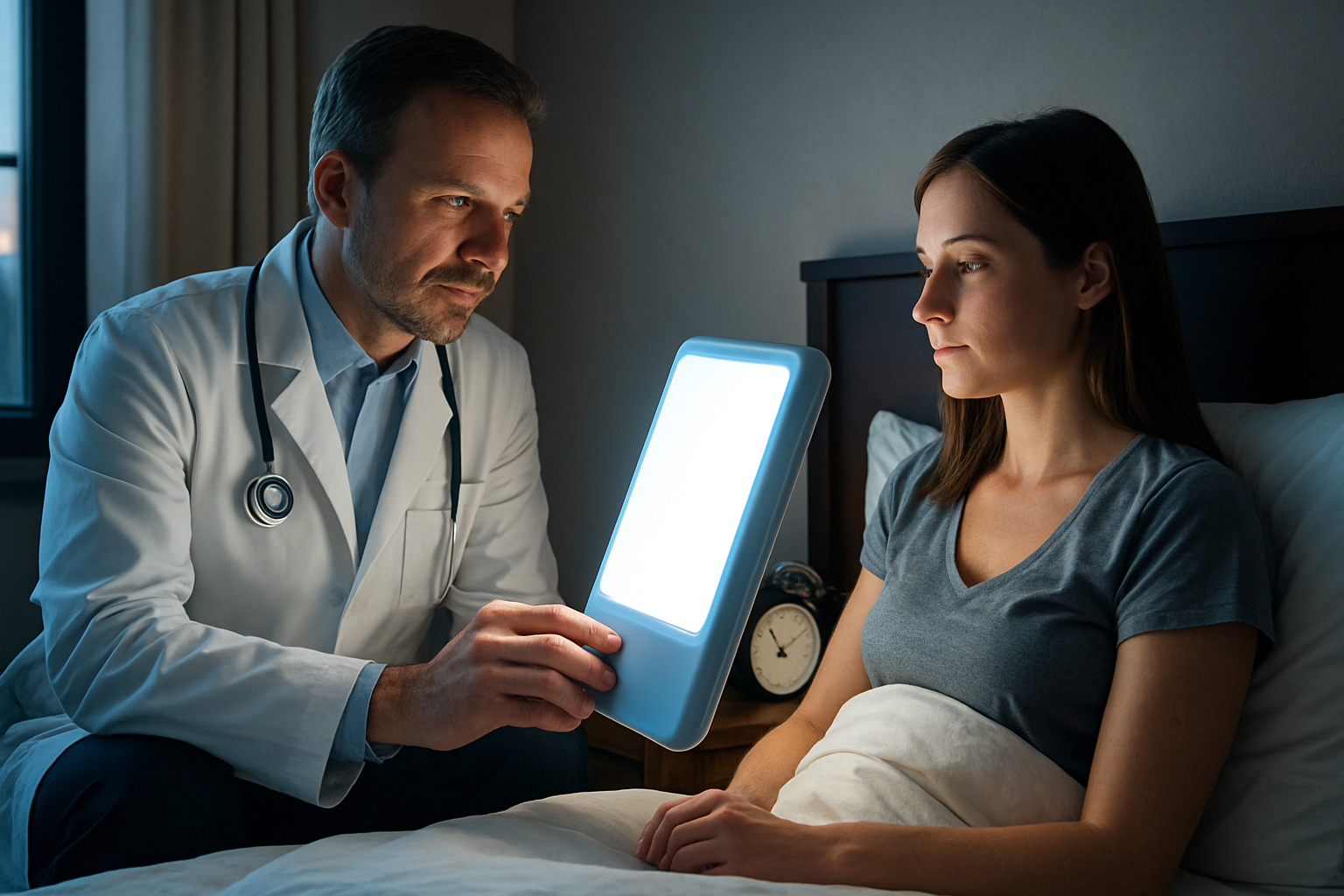Chronophototherapy: Illuminating the Path to Better Health
Did you know that the timing of your light exposure could be the key to unlocking optimal health? Imagine a world where simply adjusting when you bask in brightness could revolutionize your sleep, mood, and overall well-being. Welcome to the fascinating realm of chronophototherapy, where the intersection of light and circadian rhythms is reshaping our approach to wellness.

The concept of using light therapeutically isn’t new; light therapy has been used for decades to treat conditions like seasonal affective disorder (SAD). However, chronophototherapy takes this a step further by considering not just the intensity and duration of light exposure, but also its timing in relation to our individual circadian rhythms.
Harnessing the Power of Light Timing
Recent research has shown that the timing of light exposure can have profound effects on our physiology. For instance, exposure to bright light in the morning helps to reset our circadian clocks, promoting alertness and improving mood. Conversely, exposure to blue light in the evening can disrupt our natural sleep-wake cycles, leading to insomnia and other sleep disorders.
Chronophototherapy protocols typically involve carefully timed exposure to specific wavelengths of light. This might include using light boxes, specialized lamps, or even wearable devices that emit light at strategic times throughout the day. The goal is to align our internal clocks with the external environment, optimizing our biological rhythms for peak performance and health.
Applications in Health and Wellness
The potential applications of chronophototherapy are vast and exciting. Here are just a few areas where this approach is showing promise:
Sleep Disorders
For individuals struggling with insomnia or circadian rhythm sleep disorders, chronophototherapy offers a non-pharmacological alternative. By carefully timing exposure to bright light in the morning and limiting blue light in the evening, sleep patterns can be gradually shifted and stabilized.
Mood Regulation
Chronophototherapy has shown remarkable results in treating mood disorders, particularly depression and bipolar disorder. By strategically timing light exposure, researchers have found that they can help regulate mood-related hormones and neurotransmitters, leading to significant improvements in symptoms.
Jet Lag and Shift Work
For frequent travelers and shift workers, chronophototherapy can be a game-changer. By manipulating light exposure before, during, and after travel or shift changes, it’s possible to minimize the disruptive effects of time zone shifts on the body’s internal clock.
Cognitive Performance
Emerging research suggests that optimizing light exposure throughout the day can enhance cognitive function, improving alertness, concentration, and even creative thinking. This has exciting implications for both academic and professional settings.
Challenges and Considerations
While the potential of chronophototherapy is immense, it’s not without its challenges. One of the main hurdles is the need for personalized approaches. Each individual’s circadian rhythm is slightly different, influenced by factors like genetics, age, and lifestyle. As such, effective chronophototherapy protocols often require careful assessment and customization.
Another consideration is the practicality of implementation. In our modern, 24/7 society, strictly controlling light exposure can be challenging. However, as awareness grows and technology advances, we’re seeing more user-friendly solutions emerge, from smart lighting systems to wearable light therapy devices.
Illuminating Facts: Shedding Light on Chronophototherapy
-
The human eye contains special photoreceptors called ipRGCs (intrinsically photosensitive retinal ganglion cells) that are specifically tuned to detect blue light and regulate circadian rhythms.
-
Exposure to just 30 minutes of bright light in the morning can significantly improve nighttime sleep quality and daytime alertness.
-
Red-spectrum light in the evening has been shown to promote melatonin production, potentially aiding in sleep onset.
-
Some airports and airlines are experimenting with chronophototherapy-inspired lighting to help passengers adapt to new time zones more quickly.
-
Researchers are exploring the potential of chronophototherapy in managing symptoms of neurodegenerative diseases like Alzheimer’s and Parkinson’s.
A Bright Future for Health
As we continue to unravel the complex relationship between light and our biology, chronophototherapy stands poised to revolutionize our approach to health and wellness. By harnessing the power of precisely timed light exposure, we have the potential to optimize our sleep, mood, cognitive function, and overall well-being in ways that were once unimaginable.
While more research is needed to fully understand and implement these techniques on a broad scale, the future of chronophototherapy looks bright indeed. As we move forward, this innovative field promises to shed new light on our path to better health, offering a beacon of hope for those seeking natural, effective ways to enhance their quality of life.





